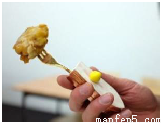题目内容
In this influential work about the surprising divide between children and the outdoors, child supporter expert Richard Louv directly links the lack of nature in the lives of today’s wired generation---he calls it nature-deficit(赤字)----to some of the most disturbing childhood trends, such as the rises in obesity, attention disorders, and depression.
Last Child in the Woods is the first book to bring together a new and growing body of research indicating that direct exposure to nature is essential for healthy childhood development and for the physical and emotional health of children and adults. More than just raising an alarm, Louv offers practical solutions and simple ways to heal the broken bond---and many are right in our own backyard.
This new edition reflects the great changes that have taken place since the book was originally published. It includes:
·100 actions you can take to create change in your community, school, and family.
·35 discussion points to inspire people of all ages to talk about the importance of nature in their lives.
·A new progress report by the author about the growing Leave No Child Inside movement.
·New and updated research confirming that direct exposure to nature is essential for the physical and emotional health of children and adults
Last Child in the Woods: Saving our Children from Nature Deficit Disorder has promoted a national dialogue among educators, health professional, parents, developers and conservationists. This is a book that will change the way you think about the future of your children.
1.What does the word “bond” in Paragraph 2 refer to?
A. Exposure to nature
B. Childhood development
C. Parent-child relationship
D. Connection between children and nature
2.What does the book focus on in children’s growth?
A. Outside activities
B. Physical labor
C. Overweight problems
D. School performances
3.What is added to the new edition?
A. Website links and related videos
B. Vivid pictures and personal examples
C. Training courses and expert supports
D. Latest research and practical instructions
4.Where is the passage from?
A. A science report B. A book review
C. A fairy tale D. A guide book


